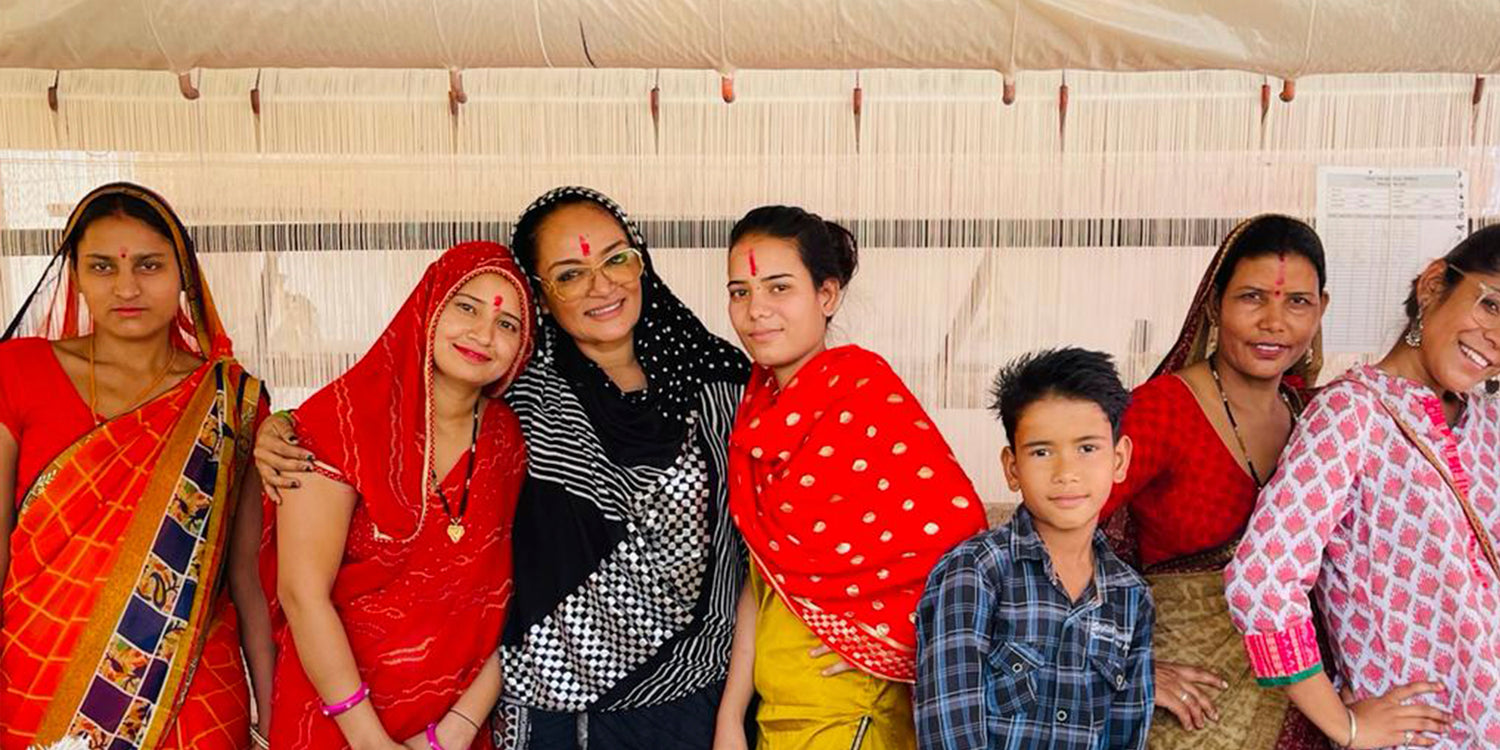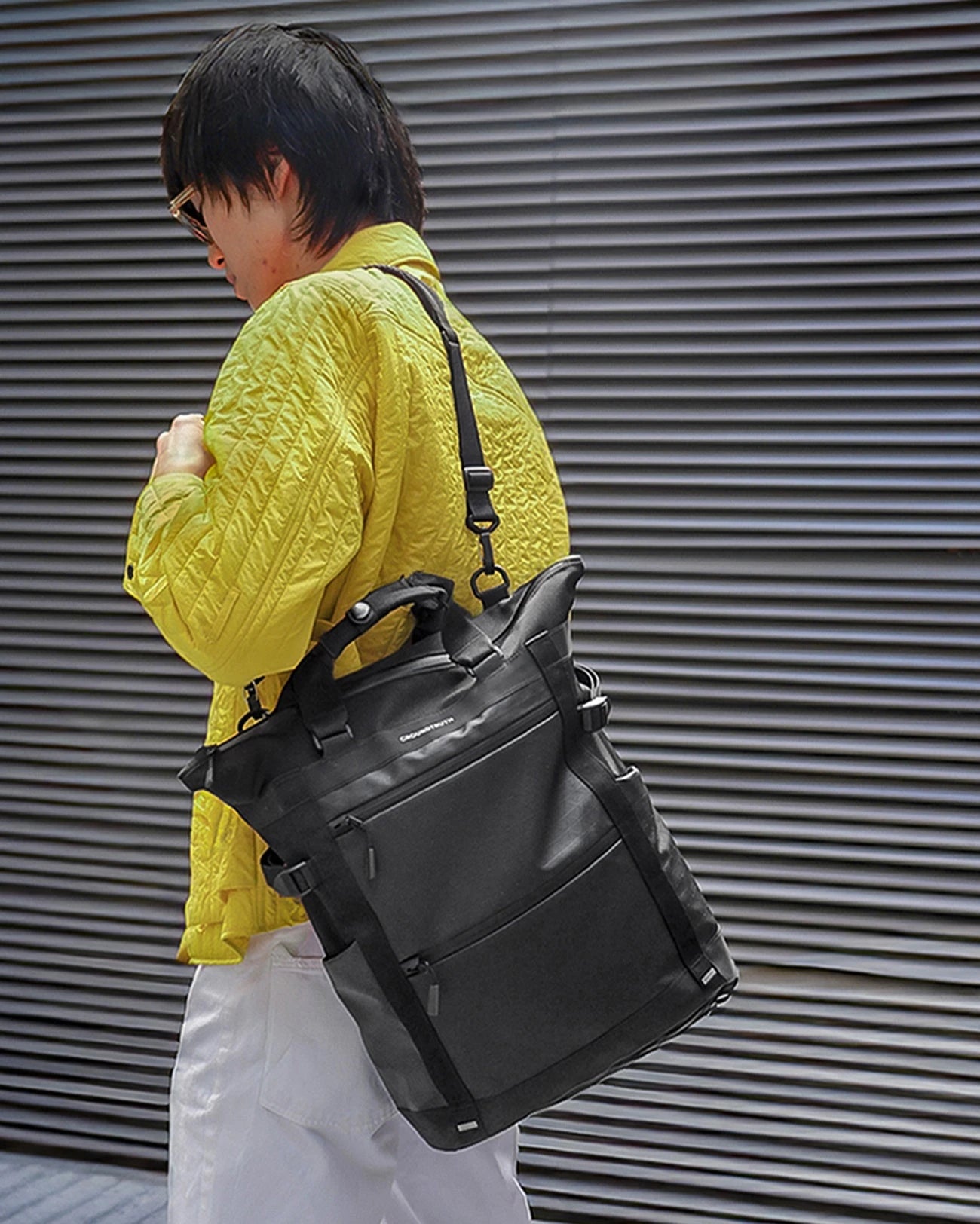Bandana Tewari is a lifestyle editor, sustainable activist and formerly the editor-at-large as well as the fashion features director of Vogue India. Watch Bandana's TedxUbud here: What Gandhi can teach us about slow fashion
THIS FORMER VOGUE EDITOR'S VISION: A FASHION WORLD WITHOUT WASTE
Written by Bandana Tewari
In my 15-odd years of working in the fashion industry (13 of which was with Vogue), observing and critiquing both domestic and international fashion markets, I made a few observations about human behaviour when it comes to purchasing power. This may not be applicable to many, but they were some of the reasons that led to my personal and ideological interest veering to mindful consumption.
Every year, I noticed how wealth and accessibility didn’t necessarily bring discretion to the purchasing power of individuals, but in fact, led to unabated shopping that was, more often than not, mistaken for happiness. That the hunger for more and more, and faster not fewer, was fuelled not only by a sense of material gratification—not necessarily a bad thing, we all want to own good things in our lives— but by a sense of boredom.
Abetted by the cult of the new (in truth, fashion’s unique way of regurgitating the old); “the new new" is the opiate that fuels the fashion world globally. That there is a social hierarchy of consumption, meaning, the ones who buy couture may think the real hoarder is the fast-fashion shopper and vice-versa. That the hoarder doesn’t really plan on using the things that he or she piles up; so much so that even useful things turn into a nuisance. Oscar Wilde got it bang on: “What is a cynic? A man who knows the price of everything, and the value of nothing."

The “2017 Global Online Consumer Report" published by KPMG surveyed thousands of people in 50 countries and noted that people no longer “go" shopping, but literally “are" shopping every minute online with their smartphones. This shopping frenzy has resulted in 34 million shipping containers (with a standard length of 20ft) being carted around the world every year. German psychiatrist Emil Kraepelin had sounded the warning note way back in 1915 when he defined CBD (compulsive buying disorder) aka oniomania or “buying mania".
Today, there is such an addiction to novelty that the possibility of suggesting notions of wastefulness and materialism that harm the environment, is likely to fall on deaf ears. Perhaps it’s the fashion media’s fault for not shining a light on the perils of over-consumption; perhaps it’s manufacturers and producers not taking on the responsibility of being custodians of this earth by promoting sustainable practices—environmental, societal and ethical; perhaps it’s the designers who have tunnel-visioned themselves into a place of profitability, not accountability; perhaps it’s us, the consumers who refuse to acknowledge that individual choices have an impact on the health of the environment—whatever the reason, the fact is, in this linear model of “take-make-waste", we have created a dystopian world of “stuffocation"—the apt title of a book by James Wallman, who says that people worldwide are feeling “stuffocated" and oppressed by their unmanageable heap of stuff. And the environment is carrying the weight of our greed.
According to the Copenhagen Fashion Summit’s “Pulse of the Industry Report", if the global population rises to 8.5 billion people by 2030 as expected, the overall apparel consumption will rise from 62 million tons in 2015 to 102 million tons in 2030—an equivalent of more than 500 billion T-shirts. What this overproduction means is, the clothing industry will drastically impact water use, carbon dioxide emissions, toxic chemical use, and generation and disposal of waste. According to the report, the total level of fashion waste is expected to rise from the 92 million in 2015 to 148 million tons by 2030. That is catastrophic for the beloved earth we inhabit.

So, what’s the solution: Waste not want not? On the contrary, fashion has become terribly inefficient, resulting in stockpiles of unused and unworn clothes bags, not only in retail stores, factories and warehouses but also in our own cupboards at home.
Here is how inventor and futurist Pablos Holman explained the absurdity of the industry at the Singularity University Global Summit in August 2016 in San Francisco: “Consider a single T-shirt, your lowest common denominator product. First you grow cotton in one country and then ship it to another country to be beaten down and bleached into something sort of white. Then it’s sent to another country to be spun into yarn, and then shipped to another country to be sewn into T-shirts, and then shipped back to America where we screen print ‘Team Building Exercise 1999’ on it. We pay $4.99, wear it one time, throw it to the bottom of the closet, and we are done." Now this is not just an American problem. It is ours in all corners of the globe.
This begs many questions: Why are we producing and buying so much? Why are we disposing of “stuff" so easily and without any compunction with regard to our environment? Do we care where the clothes come from? Or as Fashion Revolution—a global online and social media movement at the forefront of scrutinizing fashion industry practices—famously asks, do we care “Who Made My Clothes?" Who Makes my Bags?

There is no doubt that addressing the environmental impact of the industry is a gargantuan exercise and must be multi-pronged to address sustainable practices across the value chain. But today, I would like to focus on addressing a simple truism to the fashion stakeholders whom I have had the privilege of working and interacting with—the fashion designers and design students across India, people who are integral to the fashion narrative of this mighty democracies.
In what has quickly become one of my favourite journals on sustainability, Loved Clothes Last by Fashion Revolution, a not-for-profit movement that campaigns for increased transparency in the fashion supply chain. I was taken in deeply by a page that said, “Waste is a Design Flaw." It goes to explain that “materials are regularly wasted during the production process. Waste can be a resource, but designers must be taught how to make use of discarded materials. While post-consumer waste is accelerated by poor design and quality, post-consumer waste can be minimized through creative design and quality construction. We need a 360° design vision where every bit of everything made is reusable, adaptable or bio-degradable—a closed loop vision for an open-minded future." Imagine inculcating this ethos in the hearts and minds of every person who plans to make clothes and bags for the world. Can our designers make this commitment?
In the grand scheme of things, this may seem like a perfunctory stab at sustainability. But it is not. If, at the design stage, our fashion designers, pattern cutters, etc., are committed to creating zero waste, committing to recycling and using sustainable materials as much as they can, we would make huge strides in addressing the problems of landfills that plague the planet. And there is a great incentive: Research after research shows that the millennial generation strongly agrees that it is more likely to buy from companies that are mindful of their environmental responsibilities. Besides, media will sooner or later have to catch up and play a pivotal role in educating and inspiring consumers to buy sustainable brands and make them aware of fashion products, systems and practices that are at the helm of protecting the planet. Because, in true fashion parlance, we are not far away from sustainability being super sexy. So designers should take heed, their brands will be held accountable for transparency and ethics as they are for their design aesthetic and trendiness.
We can start, very simply, with “Waste is a Design Flaw", go back to the drawing board, learn to innovate, empower individuals and organizations with the mindset to create less “stuff", and certainly, create less waste by employing mindful designs. This could be a great start to resetting a reckless industry that needs to focus on circular fashion, explained quite succinctly in the “Circular x Fashion Tech Trend Report 2018"—as “transforming from ‘take-make-waste’ (linear model) to ‘take-make-take-make-take-
Let’s design out waste.









